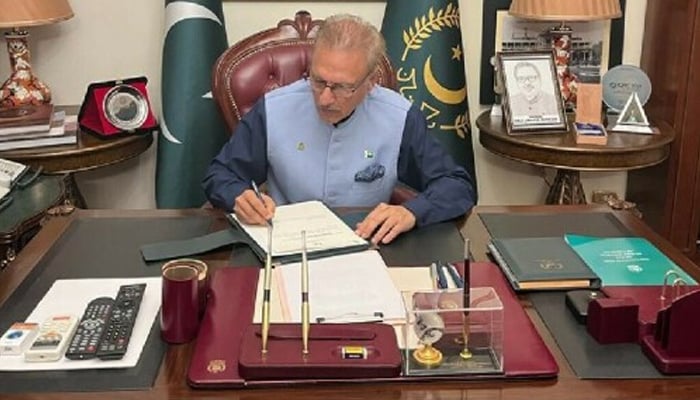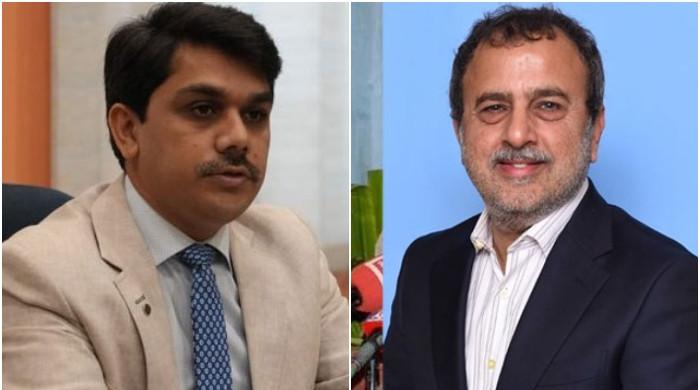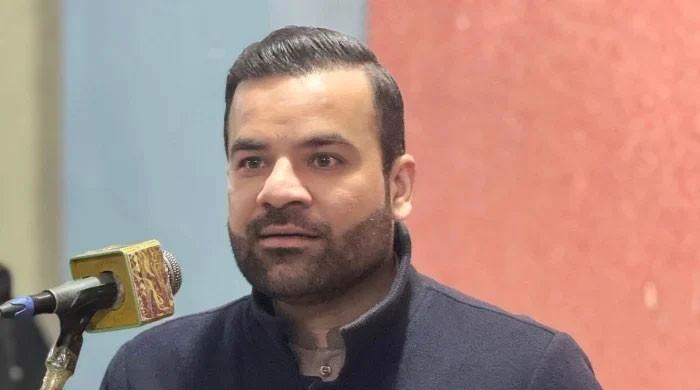Key laws assent controversy: Here is how President Secretariat works
Controversy leaves experts divided on status of Official Secrets and Army Act amendment bills
Pakistan is yet again facing a constitutional controversy after President Arif Alvi denied signing the Official Secrets and Army Act amendment bills, saying that his staff undermined his directives.
However, the controversy has left the experts divided on the status of the said legislation.
As per Article 75 of the Constitution, when a bill is sent for assent, the president has two options: either give assent or return the matter to the parliament with specific observations.
However, Article 75 does not provide for any third option. The Constitution is silent on returning the bills without any observations or assent, according to some experts.
Under the procedure laid down in the Constitution, any bill passed by a joint meeting of Parliament will become law after 10 days even if the president doesn’t give his assent.
Legal experts are currently divided on the status of the said bills and have different interpretations of Article 75.
It may be noted that no joint meeting of the parliament was convened on the said bills.
With the president claiming his staff "undermined" his orders on the signing of bills, legal and political analysts say that he should have taken timely action against those involved in the alleged forgery committed at the presidency.
To understand this, here is an explanation of how the President's Secretariat works:
A report by BBC Urdu quoted a former officer from the presidency as saying that the staff of the Prime Minister House and the President House is divided into two departments.
The first of these departments is called the "Internal Wing" which is headed by the military secretary to the president and the prime minister, who is usually a one-star military officer called brigadier.
Under the military secretary there is a deputy military secretary and under him are the three additional deputy secretaries representing the three branches of the armed forces.
These three officials lead a team consisting of security officers, staff, and a team of protocol officers.
The internal wing is tasked with managing the president's personal affairs, his security, internal and external visits and meetings, etc.
While the other wing is headed by the senior most bureaucratic officer, who is the secretary to the president.
The post is held by a 21-grade bureaucrat, who leads a secretariat that includes additional secretaries, joint secretaries, deputy secretaries, and other office staff.
Any file requiring the president's signature or assent first goes to the section officer of the staff of the presidency, who comes last in the list of officers, as per the BBC report.
The section officer reviews this file, which contains the text of the application or the act on the right side, with all its documents attached.
A minute sheet or notice for consideration (NFC) is pasted on the left side of the file, where the section officer writes in brief about the file that has come from the National Assembly, Senate, or any ministry. It is then sent to the assistant secretary for approval.
From here the file goes to the joint secretary, then the deputy secretary, and followed by the secretary to the president who then presents the file to the president.
During all these steps, notes are written on this file, it is checked and any deficiencies are corrected or sent back to the concerned ministry or department.
After reaching the president, if he gives his "stamp of approval," the work is considered completed, and if not, it is sent back with a "disapproved" sign.
The return of any file also follows the same chain of command through which it first reached the office of the president. The section officer forwards the file to the concerned institution, department, ministry, or parliament with objections.
-
Security forces gun down 30 terrorists in multiple IBOs in KP: ISPR
-
MQM-P calls for new province in Sindh
-
US report validates Pakistan military edge over India: PM
-
Banned TTP poses serious threat to Pakistan security: UNSC panel
-
CM Afridi clarifies remarks on by-poll after ECP requests army deployment
-
Dubai sees 3.2m Pakistani passengers in 2025 as airport sets new milestone
-
Security forces kill 23 Indian proxy terrorists in KP's Kurram
-
Pakistan to construct island to boost oil exploration: report












